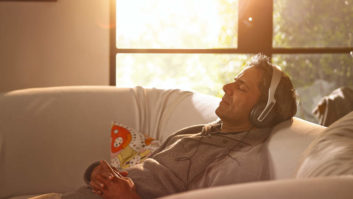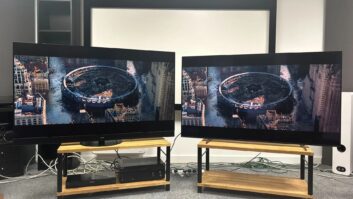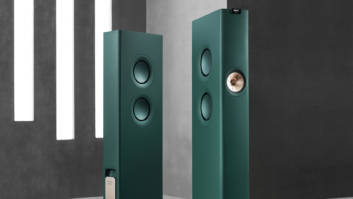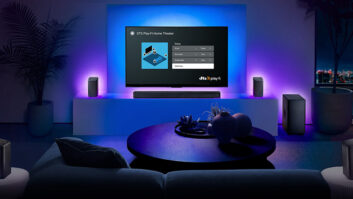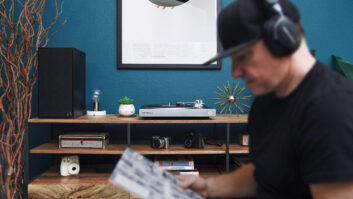Active speaker systems for the iPod have become one of the hottest sellers in home and portable audio and are poised to become the next-generation boombox or compact shelf system for many consumers.
Called iPod hi-fi stations, or just iPod speaker systems, their function is to dock specifically with the iPod, and sometimes with other brands of MP3 players, to produce audio loud enough to be heard across a room, patio, deck or beach blanket.
The U.S. market for hi-fi stations retailing for more than $100 is expected this year to grow 40 percent to 50 percent to exceed $300 million at the factory level, following 2005 growth of up to 100 percent, several marketers told TWICE. If true, then $100-plus hi-fi stations would account for about 25 percent of the $1.3 billion in retail-level sales of all iPod accessories forecast by The NPD Group for 2006.
The percentage could be even higher if based on Altec Lansing forecasts of $500 million in factory-level sales of $100-plus iPod speaker systems.
Because the iPod generates retail margins of less than 15 points, retailers have come to rely on iPod accessories, often at 40 point margins, to boost iPod profits. Some suppliers claim that customers will spend on accessories as much as they did on their iPod. And Robert Heiblim, Altec Lansing senior sales and marketing VP, believes 12 percent to 15 percent of all iPods sold get a $100-plus speaker system.
Best Buy senior iPod buyer Tom Klius called iPod accessories “one of the hottest categories for Best Buy.”
J&R Music World decided the category merited a separate catalog and recently published one offering 900 products. J&R claims to offer more iPod accessories than any other retailer.
Of all iPod accessories, hi-fi stations afford the highest profits and some of the highest market growth, fueled in part by consumer demand to extend the iPod’s utility beyond that of a headset portable.
“Even if you are listening by yourself, it’s nice to move around a room free of the ear buds, and if you have company, you need something that plays into the air,” said Tivoli Audio CEO Tom DeVesto.
J&R buyer Patty Drake noted that hi-fi stations, among all the accessories offered by the retailer, “are the only thing I carry in excess of $200 retail. Most of the cases top out at $40 or $50.”
The market was so dynamic last year that a new division of SDI Technologies called iHome launched a docking clock radio in July and enjoyed shipments of 1 million units by the end of the year (see story below).
“If you nailed the product and features and distribution, the sky was the limit,” said Kensington marketing VP Rob Humphrey.
Fred Faulkner, Harman sales and marketing VP, said the open-frontier mentality was particularly strong in the fourth quarter and cited iHome as an example. “They didn’t have a brand … No one had ever heard of iHome, but because they were promoted by certain retailers and the product resonated with the customer, it was arguably the best-selling product in its category over the holiday season.”
This year the landscape appears a bit more forbidding, said Faulkner, because there are now 60 to 100 iPod speaker products for retailers to pick and choose.
Steve Baker, NPD analyst VP, sees the amplified speaker segment growing by 40 percent or 50 percent in 2006, while Kensington foresees 50 percent growth for the total iPod speaker market. It’s “just scratching the surface,” said Humphrey.
Some of the trends to expect this year include attempts to push the high-end envelope beyond $350, a new ceiling that Apple set with its introduction of the iPod Hi-Fi at $349 in the first quarter.
This year, suppliers expect the category to settle into a “good, better, best” selection, with such technical innovations as the possible addition of satellite radio.
Some marketers see the products replacing or simply re-inventing the traditional audio shelf system and the boombox.
Although the critical audio listener will continue to spend $2,000 to $3,000 on a component system, many consumers will opt for a $400 iPod speaker system, said Logitech product manager Wells Brimhall. “As more and more people buy iPods, I think there is room for [higher priced] $300 to $400 iPod speakers because the alternative is a multi-thousand dollar system.”
Apple’s iPod Hi-Fi has performed well despite its high $346 average selling price, said NPD. With two months of sales under its belt, the iPod Hi-Fi shot to seventh place in unit sell-through in April and to second place in dollar sell-through, NPD statistics show. Bose ranked first in unit and dollar sell-through in April as it had during the November through February period.
Klipsch holds that consumers may be willing to spend up to $1,000 for an iPod speaker system. “Right now, there’s an equation, which I believe is a myth, that if your MP3 player is $300, you’ll only spend X on your music system,” said Klipsch president Paul Jacobs. “I don’t think the customers have voted that way. I think we’re creating our own self fulfilling prophesy.”
Harman’s Faulkner said, “I think you’ll see greater offerings and higher prices,” noting that Harman is looking at “establishing the high end” as well as “offering products in more popular price points.”
Even before Apple launched the iPod Hi-Fi at $349, Bose led the category with the SoundDock at an average $298 selling price from November through February 2006, according to NPD (see table).
“I think the business is going through a transition. The people that might have opted for a less-expensive shelf system for an office or den and have converted their music library to an MP3 player, will, for sure, replace the old style system [with a Hi-Fi station for an MP3 player],” said Jacobs. But he noted that there are still many people “who don’t care to get involved with Apple iPods or MP3 players.” Jacobs said the same is true for boomboxes. “Again, it’s a transition. I don’t think one day boombox and shelf systems will go away.”
Factory-level sales of traditional CD boomboxes, CEA statistics show, declined about 25 percent last year in units and dollars, to $194 million, while sales of compact audio systems fell by 13 percent in units and 32 percent in dollars to $612 million.
By contrast, factory-level sales of iPod speaker products priced at more than $100 could hit $500 million in 2006, according to Altec Lansing’s Heiblim. Other suppliers thought sales could hit $300 million this year, including Klipsch’s Jacobs, who offers as a pure guess that a third or half of the $300 million in volume is at $200 and above. “If you just look at the early success of Apple’s entry into that market, the early sell-through numbers on the piece are extremely strong.”
Further, suppliers are hinting that the hi-fi stations will become increasingly high tech. Kensington says it expects to see satellite radio, as well as AM/FM tuners, integrated into the speaker systems as early as this year. In the future, some of these hi-fi stations could accommodate music-enabled cellphones and include Skype technology, said Humphrey.
New hi-fi stations include the Logitech mm32 portable iPod speaker, which can be docked, in a cylinder-shaped design. The unit works with most iPods and MP3 players. It ships in white in May and in black in June at $79.99.
Best-Selling iPod Hi-Fi Station




